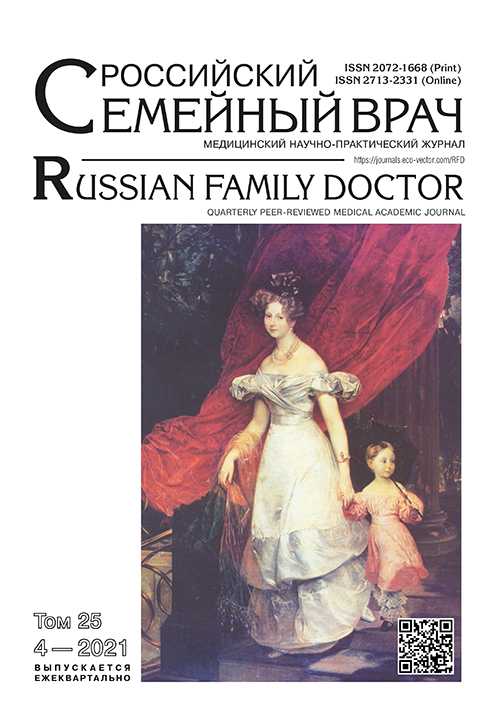Особенности гериатрического статуса пациентов в период пандемии COVID-19
- Авторы: Богданова Т.А.1
-
Учреждения:
- Северо-Западный государственный медицинский университет им. И.И. Мечникова
- Выпуск: Том 25, № 4 (2021)
- Страницы: 23-30
- Раздел: Оригинальное исследование
- Статья получена: 31.05.2021
- Статья одобрена: 02.12.2021
- Статья опубликована: 15.12.2021
- URL: https://journals.eco-vector.com/RFD/article/view/71130
- DOI: https://doi.org/10.17816/RFD71130
- ID: 71130
Цитировать
Аннотация
Обоснование. У пациентов пожилого и старческого возраста новая коронавирусная инфекция может проявляться атипичными симптомами, такими как делирий, головокружения и повышенная утомляемость. В то же время ограничение передвижения и страх заражения в период пандемии приводят к снижению уровня физической активности и появлению симптомов тревоги, депрессии и нарушений сна у таких пациентов. Поскольку эти симптомы и состояния являются значимыми факторами риска падений, в ближайшем будущем ожидается повышение риска и частоты падений у пожилых людей.
Цель работы — определить заболеваемость новой коронавирусной инфекцией у пациентов 65 лет и старше, а также частоту и факторы риска падений у пожилых пациентов, перенесших эту болезнь.
Материалы и методы. В исследовании приняли участие 86 пациентов, территориально прикрепленных к Центру семейной медицины Северо-Западного государственного медицинского университета им. И.И. Мечникова, которые переболели новой коронавирусной инфекцией. Из них 48 человек (доступных на момент исследования) были опрошены для определения факторов риска и случаев падений. Группу контроля составили 58 пациентов, не болевших новой коронавирусной инфекцией. Проведены анализ амбулаторных карт пациентов, скрининг старческой астении, анкетирование, оценка эмоционального статуса и проверка наличия нарушений сна.
Результаты. У пациентов основной группы выявлена более высокая частота неврологических симптомов (р < 0,05), таких как головокружение, неустойчивость при ходьбе, нарушение или потеря обоняния (аносмия), потеря вкуса (дисгевзия), нарушение сна, симптомы депрессии и тревоги. В основной группе отмечено больше пациентов со сниженной массой тела (р = 0,0127). Пациенты контрольной группы чаще жаловались на нарушение памяти и внимания, снижение зрения, симптомы тревоги и депрессии и трудности при передвижении. Частота симптомов преастении и астении в группе контроля составила 63,1 % (n = 53). Пациенты, не болевшие новой коронавирусной инфекцией, достоверно чаще отмечали неустойчивость при ходьбе (60,3 %, n = 35), чем пациенты, перенесшие инфекцию (37,5 %, n = 18) (p = 0,002). У трети пациентов основной группы впервые выявлен повышенный уровень глюкозы в плазме крови, в 3,4 % случаев ухудшилось течение сахарного диабета, а 5,8 % пациентов были повторно госпитализированы в течение 3 мес. после заболевания.
Выводы. Исследование показало у пациентов основной группы высокую частоту неврологических симптомов, таких как головокружение, неустойчивость при ходьбе, нарушение сна, симптомы депрессии и тревоги, а также снижение массы тела. Пациенты контрольной группы чаще жаловались на нарушения памяти и внимания, снижение зрения, симптомы тревоги и депрессии и трудности при передвижении. Выявленные в обеих группах синдромы и симптомы являются факторами риска падений и риска развития страха падений.
Полный текст
Об авторах
Татьяна Андреевна Богданова
Северо-Западный государственный медицинский университет им. И.И. Мечникова
Автор, ответственный за переписку.
Email: bogdanova.t@szgmu.ru
ORCID iD: 0000-0002-8636-8003
SPIN-код: 4126-6041
ассистент
Россия, 191015, Санкт-Петербург, Кирочная ул., д. 41Список литературы
- Singhal S., Kumar P., Singh S. et al. Clinical features and outcomes of COVID-19 in older adults: a systematic review and meta-analysis // BMC Geriatr. 2021. Vol. 21, No. 1. P. 32. doi: 10.1186/s12877-021-02261-3
- Временные Методические рекомендации. Профилактика, диагностика и лечение новой коронавирусной инфекции (COVID-19). Версия 13(14.10.2021) [Электронный ресурс]. Режим доступа: https://static0.minzdrav.gov.ru/system/attachments/attaches/ 000/058/211/original/BMP-13.pdf. Дата обращения: 27.11.2021.
- Gawronska K., Lorkowski J. Falls as one of the atypical presentations of COVID-19 in older population // Geriatr. Orthop. Surg. Rehabil. 2021. Vol. 12. P. 2151459321996619. doi: 10.1177/2151459321996619
- Yamada M., Kimura Y., Ishiyama D. et al. Effect of the COVID-19 epidemic on physical activity in community-dwelling older adults in Japan: a cross-sectional online survey // J. Nutr. Health Aging. 2020. Vol. 24, No. 9. P. 948–950. doi: 10.1007/s12603-020-1424-2
- Ткачева О.Н., Рунихина Н.К., Остапенко В.С. и др. Валидация опросника для скрининга синдрома старческой астении в амбулаторной практике // Успехи геронтологии. 2017. Т. 30, № 2. С. 236–242.
- Клинические рекомендации. Падения у пациентов пожилого и старческого возраста. 2020 [Электронный ресурс]. Режим доступа: https://rgnkc.ru/images/metod_materials/KR_Padeniya.pdf. Дата обращения: 27.11.2021.
- Spitzer R.L., Kroenke K., Williams J.B. Validation and utility of a self-report version of PRIME-MD: the PHQ primary care study. Primary Care Evaluation of Mental Disorders. Patient Health Questionnaire // JAMA. 1999. Vol. 282, No. 18. P. 1737–1744. doi: 10.1001/jama.282.18.1737
- Byrne G.J., Pachana N.A. Development and validation of a short form of the Geriatric Anxiety Inventory-the GAI-SF // Int. Psychogeriatr. 2011. Vol. 23, No. 1. P. 125–131. doi: 10.1017/S1041610210001237
- Ayoubkhani D., Khunti K., Nafilyan V. et al. Post-covid syndrome in individuals admitted to hospital with covid-19: retrospective cohort study // BMJ. 2021. Vol. 372. P. n693. doi: 10.1136/bmj.n693
- Shah W., Hillman T., Playford E.D., Hishmeh L. Managing the long term effects of covid-19: summary of NICE, SIGN, and RCGP rapid guideline // BMJ. 2021. Vol. 372. P. n136. doi: 10.1136/bmj.n136
- Saniasiaya J., Kulasegarah J. Dizziness and COVID-19 // Ear Nose Throat J. 2021. Vol. 100, No. 1. P. 29–30. doi: 10.1177/0145561320959573
- Gawronska K., Lorkowski J. Falls as one of the atypical presentations of COVID-19 in older population // Geriatr. Orthop. Surg. Rehabil. 2021. Vol. 12. P. 2151459321996619. doi: 10.1177/2151459321996619
- Briguglio M., Giorgino R., Dell'Osso B. et al. Consequences for the elderly after COVID-19 isolation: FEaR (frail elderly amid restrictions) // Front. Psychol. 2020. Vol. 11. P. 565052. doi: 10.3389/fpsyg.2020.565052
- Schoene D., Heller C., Aung Y.N. et al. A systematic review on the influence of fear of falling on quality of life in older people: is there a role for falls? // Clin. Interv. Aging. 2019. Vol. 14. P. 701–719. doi: 10.2147/CIA.S197857
- Hoffman G.J., Malani P.N., Solway E. et al. Changes in activity levels, physical functioning, and fall risk during the COVID-19 pandemic // J. Am. Geriatr. Soc. 2021. doi: 10.1111/jgs.17477
Дополнительные файлы








